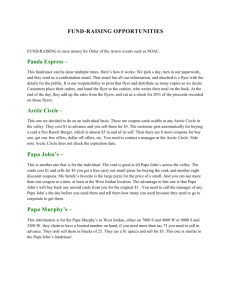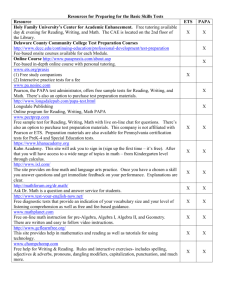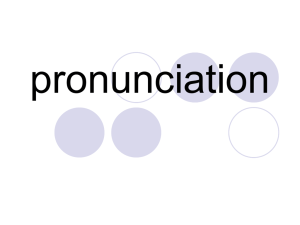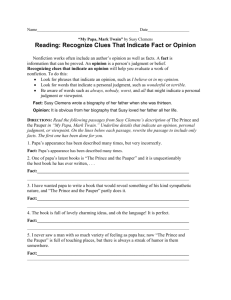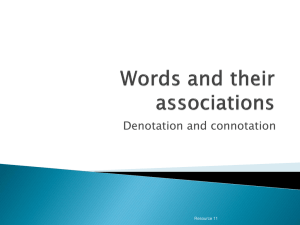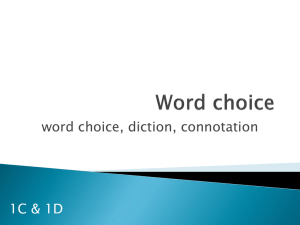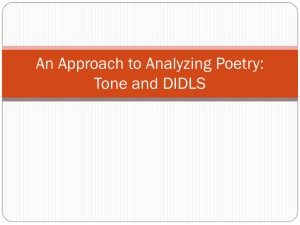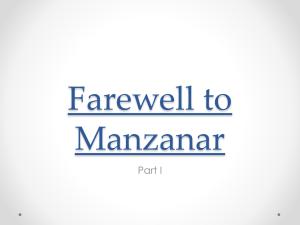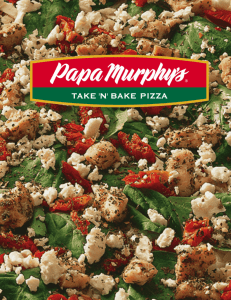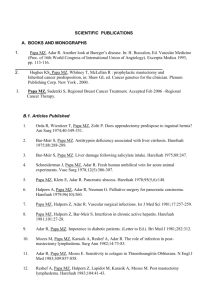English I Notes August 27-28 Point of View—the narrator`s position
advertisement
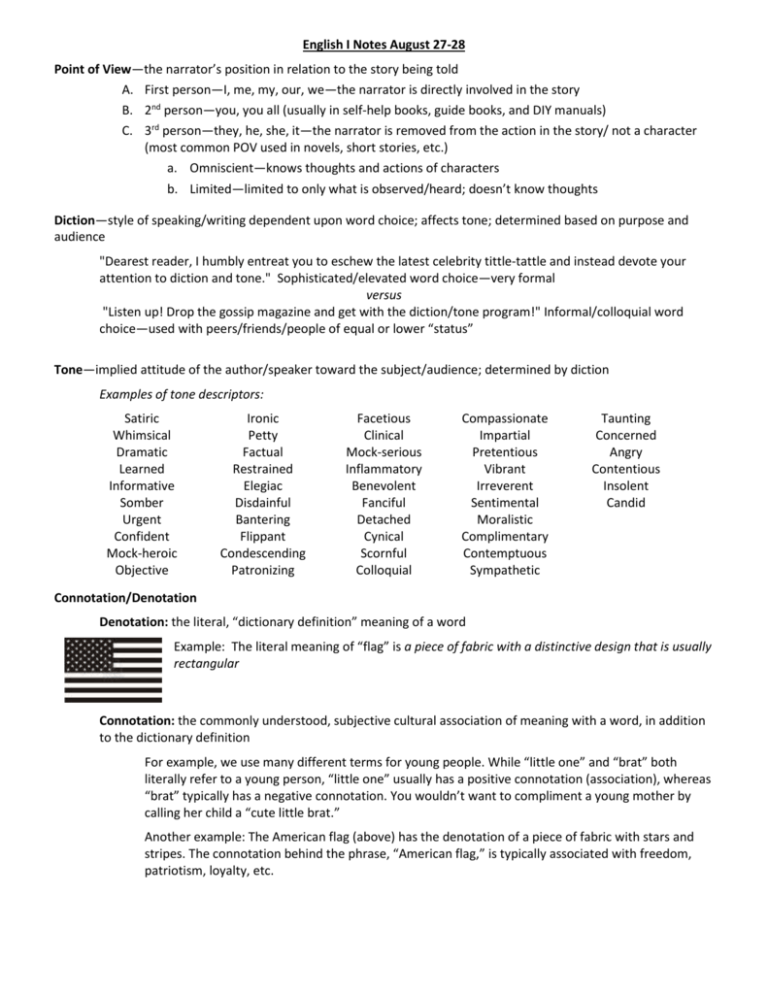
English I Notes August 27-28 Point of View—the narrator’s position in relation to the story being told A. First person—I, me, my, our, we—the narrator is directly involved in the story B. 2nd person—you, you all (usually in self-help books, guide books, and DIY manuals) C. 3rd person—they, he, she, it—the narrator is removed from the action in the story/ not a character (most common POV used in novels, short stories, etc.) a. Omniscient—knows thoughts and actions of characters b. Limited—limited to only what is observed/heard; doesn’t know thoughts Diction—style of speaking/writing dependent upon word choice; affects tone; determined based on purpose and audience "Dearest reader, I humbly entreat you to eschew the latest celebrity tittle-tattle and instead devote your attention to diction and tone." Sophisticated/elevated word choice—very formal versus "Listen up! Drop the gossip magazine and get with the diction/tone program!" Informal/colloquial word choice—used with peers/friends/people of equal or lower “status” Tone—implied attitude of the author/speaker toward the subject/audience; determined by diction Examples of tone descriptors: Satiric Whimsical Dramatic Learned Informative Somber Urgent Confident Mock-heroic Objective Ironic Petty Factual Restrained Elegiac Disdainful Bantering Flippant Condescending Patronizing Facetious Clinical Mock-serious Inflammatory Benevolent Fanciful Detached Cynical Scornful Colloquial Compassionate Impartial Pretentious Vibrant Irreverent Sentimental Moralistic Complimentary Contemptuous Sympathetic Taunting Concerned Angry Contentious Insolent Candid Connotation/Denotation Denotation: the literal, “dictionary definition” meaning of a word Example: The literal meaning of “flag” is a piece of fabric with a distinctive design that is usually rectangular Connotation: the commonly understood, subjective cultural association of meaning with a word, in addition to the dictionary definition For example, we use many different terms for young people. While “little one” and “brat” both literally refer to a young person, “little one” usually has a positive connotation (association), whereas “brat” typically has a negative connotation. You wouldn’t want to compliment a young mother by calling her child a “cute little brat.” Another example: The American flag (above) has the denotation of a piece of fabric with stars and stripes. The connotation behind the phrase, “American flag,” is typically associated with freedom, patriotism, loyalty, etc. Characterization— the process of revealing the personality of a character Character- a person in a story, poem, or play (sometimes animals) Ways to reveal character: 1. Letting us hear the character speak 2. Describing how they look or dress 3. Letting us listen to the character’s inner thoughts and feelings 4. Revealing what other characters think or say about the character 5. Showing us what the character does— how they act. 6. Tell us directly what the character’s personality is like: cruel, kind, sneaky, etc. Indirect Characterization- (first 5 ways) we have to use our own judgment to decide what a character is like, based on the evidence the writer gives us. Direct characterization- (#6) we don’t have to decide for ourselves Characters are classified as: Static- one who does not change much Dynamic- character changes as a result of the story’s events Flat- has only one or two traits Round- like a real person, has many different character traits Motivation- the fears or conflicts that drive a character (ex: vengeance, fear, greed, love, boredom) “Papa Who Wakes Up Tired in the Dark” By Sandra Cisneros Your abuelito is dead, Papa says early one morning in my room. Esta muerto, and then as if he just heard the news himself, crumples like a coat and cries, my brave Papa cries. I have never seen my Papa cry and don't know what to do. I know he will have to go away, that he will take a plane to Mexico, all the uncles and aunts will be there, and they will have a black-and-white photo taken in front of the tomb with flowers shaped like spears in a white vase because this is how they send the dead away in that country. Because I am the oldest, my father has told me first, and now it is my turn to tell the others. I will have to explain why we can't play. I will have to tell them to be quiet today. My Papa, his thick hands and thick shoes, who wakes up tired in the dark, who combs his hair with water, drinks his coffee, and is gone before we wake, today is sitting on my bed. And I think if my own Papa died what would I do. I hold my Papa in my arms. I hold and hold and hold him. APPLICATION ASSIGNMENT 1. Identify the point of view of the above passage. 1st person 2. What is the tone of the passage? Sentimental Elegiac Nostalgic 3. What word choices (diction) help to convey the tone? Provide at least two (words or phrases). Crumples like a coat; brave Papa cries; don’t know what to do; it is my turn to tell the others; I will have to explain; I hold and hold and hold… 4. What is the denotation of the word “papa?” Father 5. What is the connotation of the word “papa,” in the passage above? Affectionate term for father; indicates his bravery/courage, sense of power/security, etc. 6. What is one example of direct characterization of Papa? Esperanza refers to Papa as “brave” (directly tells what character is like) 7. List three examples of indirect characterization of the narrator. What can we infer about her character? 1) She is a young child, evidenced by her word choices (narration) and her discussing her Papa crying and her not knowing what to do 2) She is growing and taking responsibility on during this event; she knows she will have to tell the others (thoughts) 3)She is very affectionate/sympathetic towards her father (actions—holding father) 8. Explain how indirect characterization in this section influences (changes/effects) the meaning of the text. Answers vary—(indirect characterization gives a more specific picture of the character than direct)
